|
Need Help?
|
|
Call
1-800-372-3706
to
speak to a Veterinary Behavior Technician |
|
Paws To Speak!
Member
Main Menu
|
|

Well Equipped Puppy
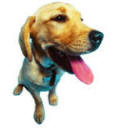
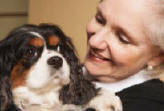
Pet Professional Tip
Use treats and consistent body language to teach the
following vocabulary to boarding pets:
Sit, Off, Wait, Easy,
Kennel, Go Potty.
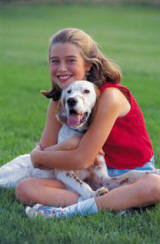
|
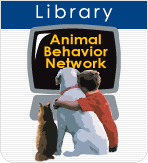 |
|
Help is at your
fingertips by library, email and
phone. |
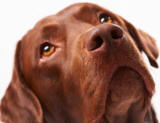
Click on
Library Icon
to learn more
|
Training Goals
Here are goals
for your dog that you can use as a
guideline as you implement Positive
Dog Parenting methods for
establishing house rules and shaping
an ideal dog personality.
Restraint and handling
Cheerfully
accept gently handling, grooming, taking
pills and cooperating with veterinary
exams. Mix in liberal food treats and
praise when practicing handling.
Housetraining
Eliminate
when given a cue word such as, "go
potty" or "get busy" in an
approved areas. Confinement with
frequent access and rewards for good
results is the key!
Socialization to people and other pets
From the
time the puppy is adopted, all members
of the family and guests need to handle
the food bowl, treats, and toys. Start
by offering extra food treats when you
approach the food bowl or ask for a toy.
Trade up! In exchange for one toy,
give the pup a treat or new toy. Make
giving up a prized possession a positive
experience from day one.
|
Ask
yourself, "Is this a
behavior that I want to
encourage?" If so,
praise lavishly. If
not, ignore or give a time
out.
|
Bite inhibition
To prevent
potential bites or fights from causing
serious damage, teach the pup to use
teeth as a warning only. Yip and
cry if the pup's teeth do more than
gently brush your hand. Stop playing for
several seconds if the pup is biting.
Allow a "cool off" time, then start
over.
How to praise appropriately
Many people
unintentionally reward bad habits, and
fail to praise good habits. Ask
yourself, "Is this a behavior that I
want to encourage?" If so, praise
lavishly. If not, ignore or give a
time out.
How to reprimand without damaging
relationships
Inconsistent punishment is much worse
than no punishment. Follow a quick
verbal correction, with a positive
Instruction (e.g. SIT), and praise that.
Attention training for owner and dog
The dog
must pay attention to receive messages,
and the dog must understand that owner
has the right to give
instructions. Teach the pup to "watch"
by rewarding eye contact.
Creating a positive chew toy habit
Prevent
house destruction and recreational
barking by teaching the pup to chew the
"right stuff." Make toys
interesting by rotating, adding food
smells, and praising any interest.
Walking on leash
Change
directions, if needed to be sure the pup
is following NOT leading. If the pup
pulls ahead, give a cue word, such as
"easy" and then reverse or move in a
different direction. The pup may
feel a quick pop at the end of the
leash. NEVER allow a tight leash this
triggers a pulling instinct. Teach
"heel" so that the pup knows clearly one
option for acceptable walking behavior.
If the pup gets too excited, ask the pup
to "sit" every few feet. This will calm
and slow things down. The pup will
learn that being too excited results in
a slower walk.
Preventing jumping-up
Never greet
a dog that jumps up. Turn your back or
to the side and ask for a "sit". If the
dog sits, squat so that you are face to
face on the dog's level and lovingly
greet and praise. If needed, put your
fingers in the collar to keep the dog in
a seated position to accept this
greeting.
Off-leash Instructions
Practice basic Instruction both on and off
leash. NEVER allow your dog off leash in
an open area. Practice in a safe place
such as an empty tennis court.
Phasing out food in training
Food
lures show the dog EXACTLY what to do,
making training easier, more fun and
more successful for the dog and the
person. Food treats are phased out but
rewards are not eliminated completely.
Would you continue to work if you were
never paid?
Dog waits before going in or out any
door
For safety
and control purposes, the dog needs to
learn that you control the passage in
and out of any home or car door. Going
out without a release must NEVER works.
Bring the dog brought back in and try
again.
|